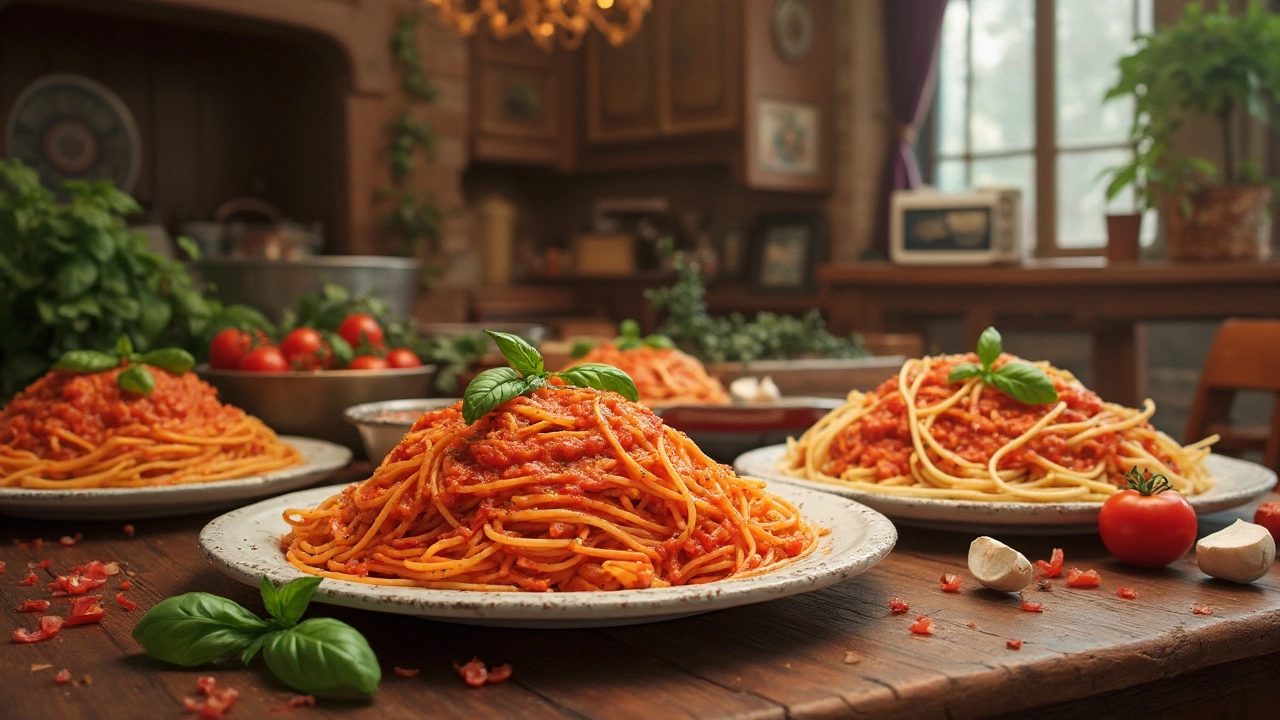Spaghetti Sauce Made Simple – Quick Recipes, Tips & Variations
If you’ve ever stared at a pot of water and wondered what to do with the sauce, you’re not alone. A good spaghetti sauce can turn plain noodles into a comfort‑food masterpiece, and you don’t need a chef’s degree to nail it. Below you’ll find the basics of a classic tomato base, a couple of easy twists, and practical advice for storage and reheating.
Classic Tomato Spaghetti Sauce
Start with a sturdy base: olive oil, garlic, onion, and canned tomatoes. Heat two tablespoons of olive oil in a saucepan over medium heat, then add a finely chopped onion. Cook until it softens, about three minutes, and toss in two minced garlic cloves – watch for a quick golden scent, not a burn.
Next, dump a 28‑ounce can of whole peeled tomatoes. Crush them with a wooden spoon or use a hand blender for a smoother texture. Add a pinch of salt, a pinch of sugar (it balances the acidity), and a splash of dried oregano or basil. Let the sauce simmer low and slow for 20‑30 minutes, stirring occasionally. The longer it cooks, the richer the flavor, but you can stop sooner if you’re in a hurry.
Easy Twists for Extra Flavor
Once you’ve mastered the basic sauce, spice it up with what’s in your pantry. A handful of chopped fresh basil added at the end lifts the dish with bright herbal notes. If you like a hit of heat, stir in a pinch of red‑pepper flakes while the sauce simmers. For a richer mouthfeel, swirl in a tablespoon of butter or a splash of cream just before serving.
Looking for a non‑tomato option? Try a quick cauliflower‑based sauce. Steam cauliflower florets until tender, then blend with garlic, a touch of vegetable broth, and nutritional yeast. The result is a creamy, low‑carb sauce that clings to spaghetti just as well as any tomato blend.
Another favorite is a roasted red‑pepper sauce. Roast a few red peppers, peel, and blend with olive oil, a squeeze of lemon, and a pinch of smoked paprika. It gives you a sweet‑smoky flavor that pairs beautifully with whole‑wheat or gluten‑free pasta.
Store any leftover sauce in airtight containers. It keeps in the fridge for up to four days and freezes solid for three months. When reheating, do it gently over low heat; a splash of water or broth revives the texture.
Now you have a toolbox of quick sauces, a solid technique, and tips for making the most out of every batch. Grab a pot, your favorite pasta, and let the sauce do the talking. Happy cooking!
Spaghetti Sauce vs Marinara Sauce: What's the Difference?
Diving into the world of pasta, one quickly encounters the debate between spaghetti sauce and marinara sauce. This article explores the key distinctions in ingredients and preparation, shedding light on how these sauces can influence a dish's flavor and texture. Discover their origins, subtle nuances, and the best culinary contexts for each. Whether you're prepping a family dinner or a gourmet feast, understanding these differences will elevate your cooking game.
